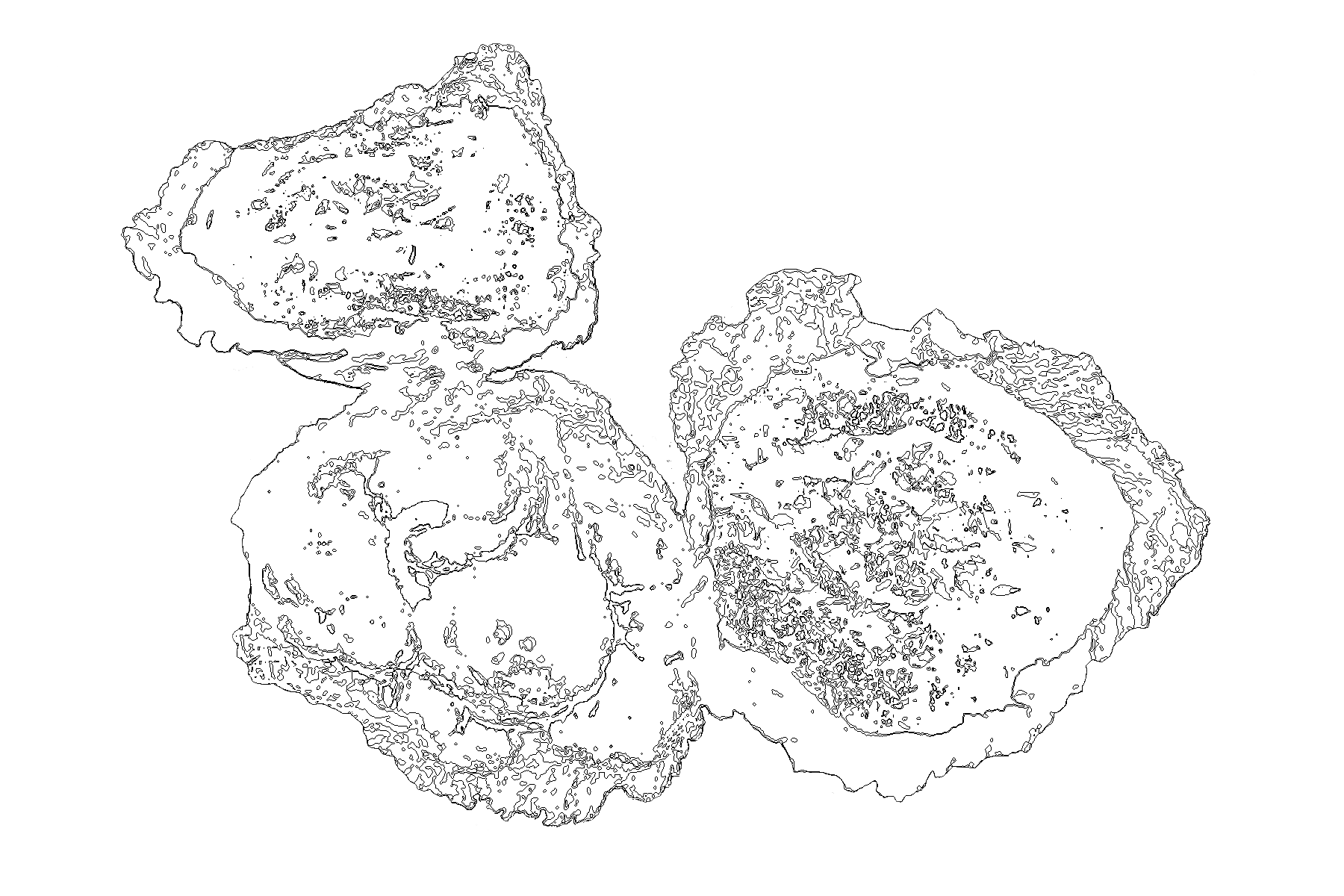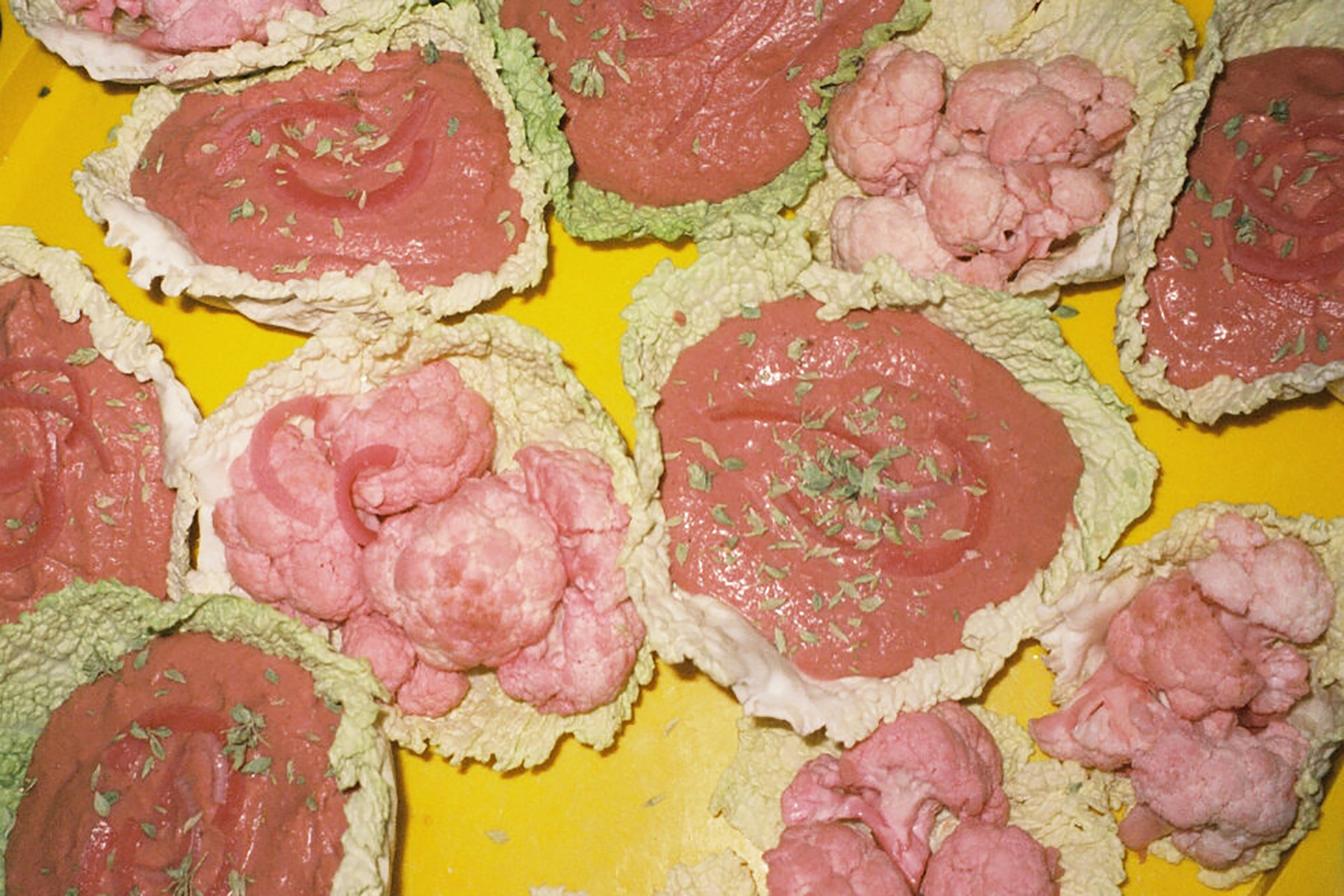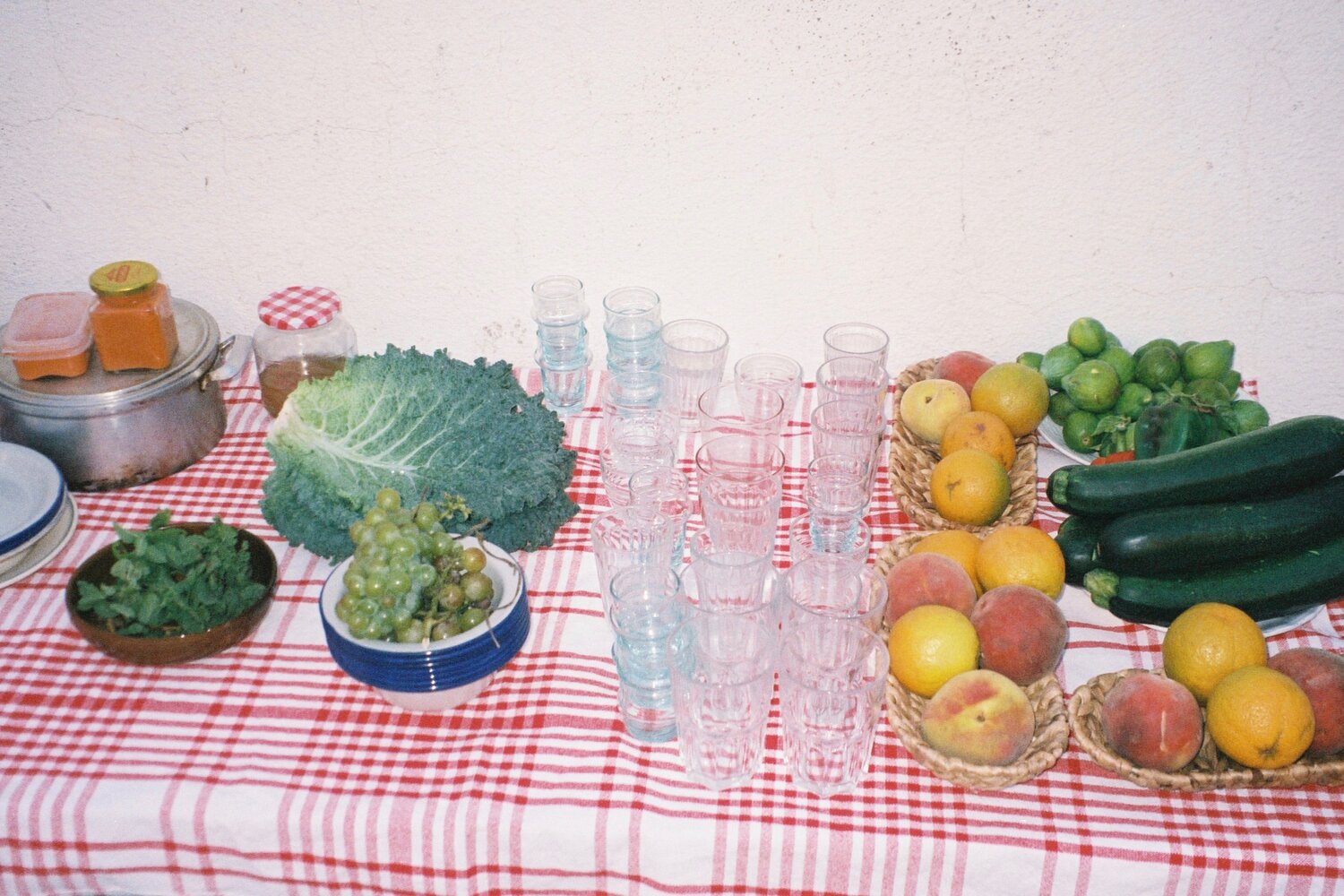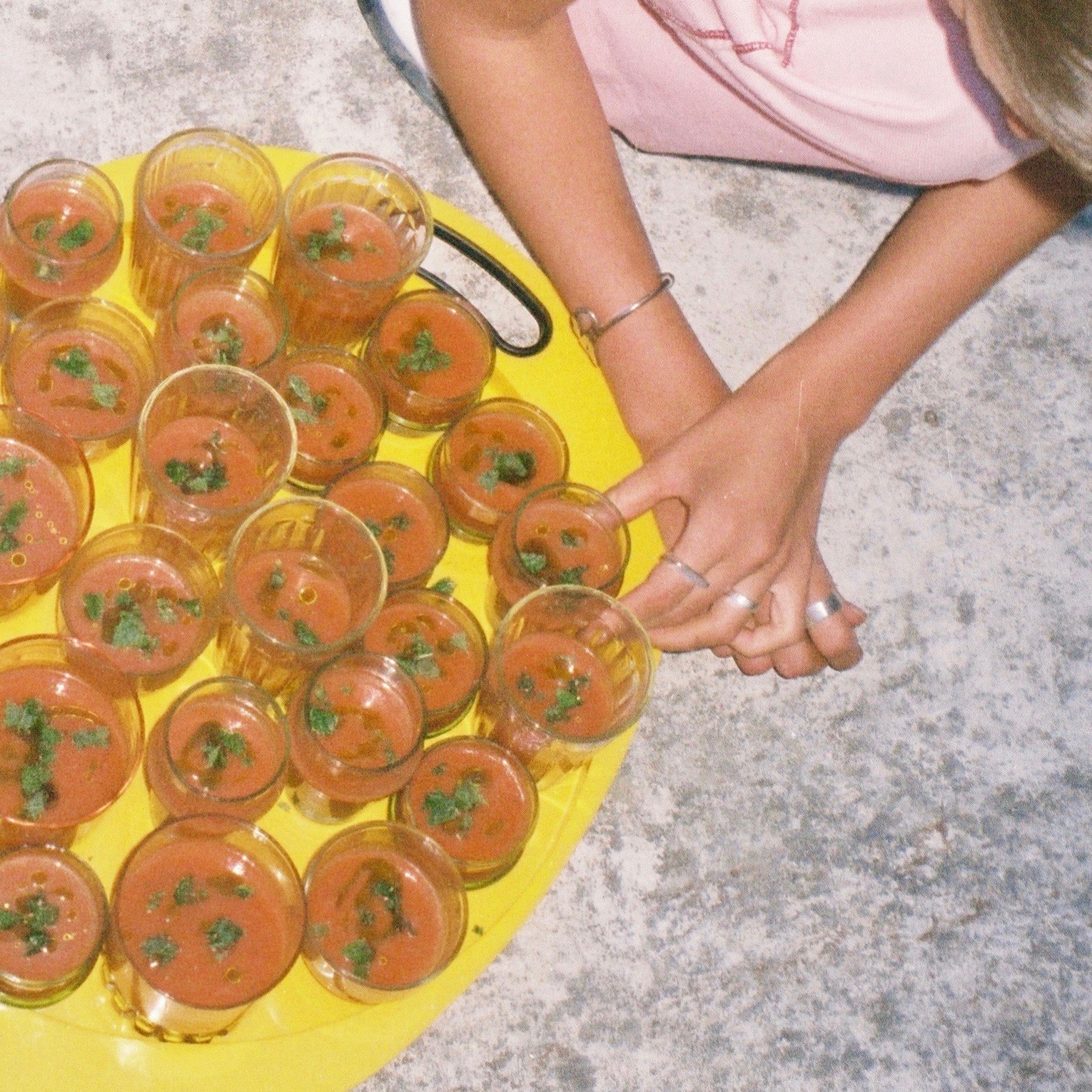
Terrapolis II
Boa Lab. Lisbon, Portugal
November 16th, 2019
Terrapolis I
Fonta de Telha, Portugal
August 26th, 2019
Boa Lab. Lisbon, Portugal
November 16th, 2019
Terrapolis I
Fonta de Telha, Portugal
August 26th, 2019
Terrapolis Collective was composed of three artists; Grace Denis, Gal Sherizly, and Jo Vávra, who together created a series of meals that explored the notion of companion planting, a system in which plants are cultivated in proximity for reciprocal benefit. Menus were implemented as a methodology to highlight these relations, constructing dishes with companion ingredients while exploring symbiosis through both terrain and plate. The name Terrapolis refers to Haraway’s description in Staying with the Trouble: Making Kin in the Chthulucene:
“Terrapolis is a fictional integral equation, a speculative fabulation. Terrapolis is n-dimensional niche space for multi-species be- coming-with. Terrapolis is open worldly, indeterminate, and poly temporal. Terrapolis is a chimera of materials, languages, histories. Terrapolis is for companion species, cum panis, with bread, at a table together - not “post-human” but “com-post.” Terrapolis is in place; terrapolis makes space for unexpected companions. Terrapolis is an equation for guman, for humus, for soil, for ongoing risky infection, for epidemics of promising trouble, for permaculture. Terrapolis is the SF game of response-ability.” [1]
The collective employed Haraway’s stance on response-ability as a vertebra for its actions and as a compass from which to interact with peripheral environments. Communicated through consistent sourcing of ingredients within small radiuses, generally within 8 kilometers, Terrapolis implemented the menu as a pedagogical tool to convey the etymology of companion, citing Haraway’s Companion Species, Mis-Recognition, and Queer Worlding, which “bring[s] us to eat together, to breaking bread, to a classical meal cum panis. ‘To companion’ ties us together in eating and pleasure.” [2] Terrapolis explored various forms of the gesture of assembling together at a table, experimenting with the definition through the presentation of examples of companion species in the plant phylum, together at a table, with bread. The collective worked primarily in Portugal and were artists in residence in July 2020 at Grosser Garten, a farm in Gerswalde, Germany.
[1] Haraway, Donna. Staying with the Trouble: Making Kin in the Chthulucene. (2016.) Duke University Press.
[2] Haraway, Donna. (2008) Companion Species, Mis-Recognition, and Queer Worlding. In: Giffney, Noreen and Hird, Myra. Queering the Non/Human. Taylor & Francis Ltd.
“Terrapolis is a fictional integral equation, a speculative fabulation. Terrapolis is n-dimensional niche space for multi-species be- coming-with. Terrapolis is open worldly, indeterminate, and poly temporal. Terrapolis is a chimera of materials, languages, histories. Terrapolis is for companion species, cum panis, with bread, at a table together - not “post-human” but “com-post.” Terrapolis is in place; terrapolis makes space for unexpected companions. Terrapolis is an equation for guman, for humus, for soil, for ongoing risky infection, for epidemics of promising trouble, for permaculture. Terrapolis is the SF game of response-ability.” [1]
The collective employed Haraway’s stance on response-ability as a vertebra for its actions and as a compass from which to interact with peripheral environments. Communicated through consistent sourcing of ingredients within small radiuses, generally within 8 kilometers, Terrapolis implemented the menu as a pedagogical tool to convey the etymology of companion, citing Haraway’s Companion Species, Mis-Recognition, and Queer Worlding, which “bring[s] us to eat together, to breaking bread, to a classical meal cum panis. ‘To companion’ ties us together in eating and pleasure.” [2] Terrapolis explored various forms of the gesture of assembling together at a table, experimenting with the definition through the presentation of examples of companion species in the plant phylum, together at a table, with bread. The collective worked primarily in Portugal and were artists in residence in July 2020 at Grosser Garten, a farm in Gerswalde, Germany.
[1] Haraway, Donna. Staying with the Trouble: Making Kin in the Chthulucene. (2016.) Duke University Press.
[2] Haraway, Donna. (2008) Companion Species, Mis-Recognition, and Queer Worlding. In: Giffney, Noreen and Hird, Myra. Queering the Non/Human. Taylor & Francis Ltd.
MENUS WERE IMPLEMENTED AS A METHODOLOGY TO HIGHLIGHT THE NOTION OF COMPANION PLANTING, A SYSTEM IN WHICH PLANTS ARE CULTIVATED IN PROXIMITY FOR RECIPROCAL BENEFIT, CONSTRUCTING DISHES WITH INGREDIENTS FROM COMPANION PAIRS AS AN EXPLORATION OF SYMBIOSIS THROUGH BOTH TERRAIN AND PLATE.





